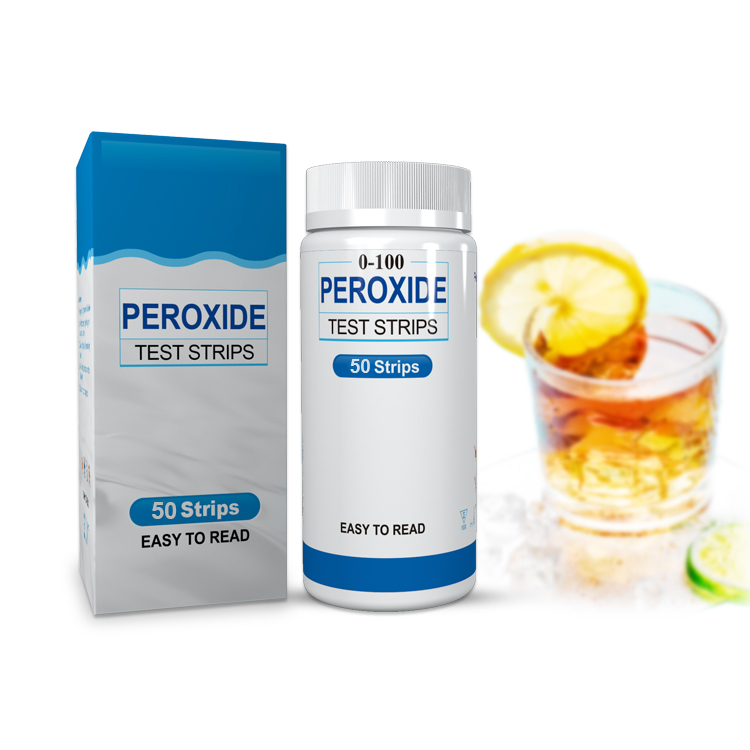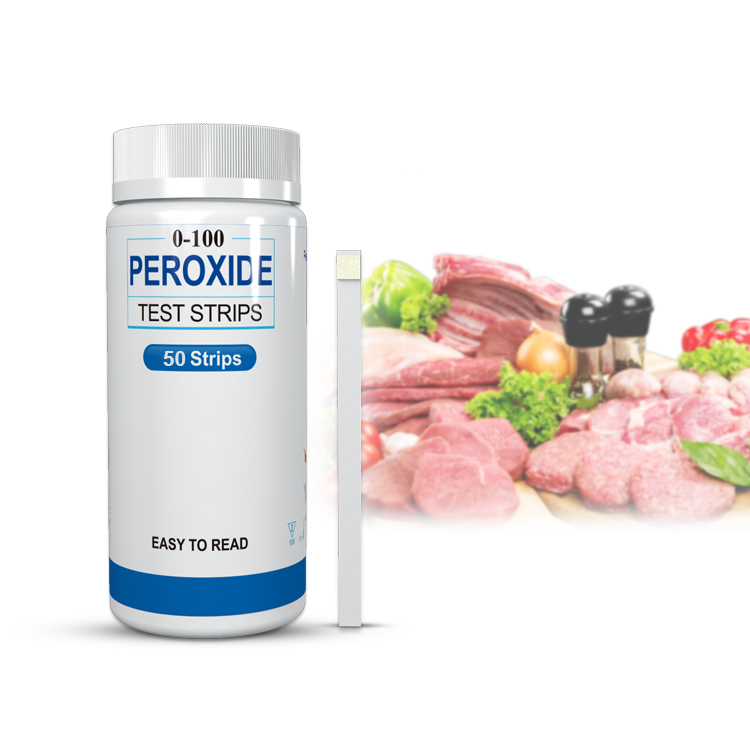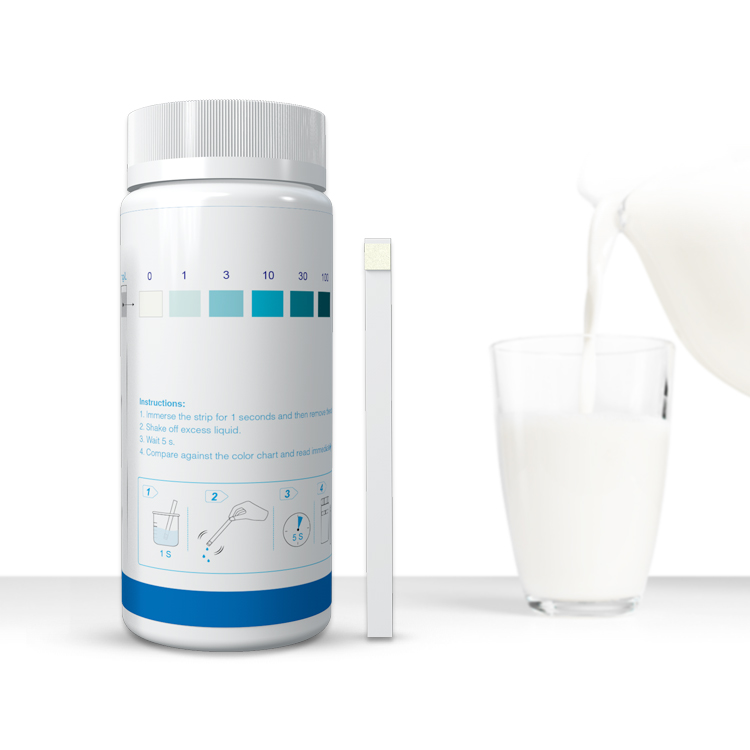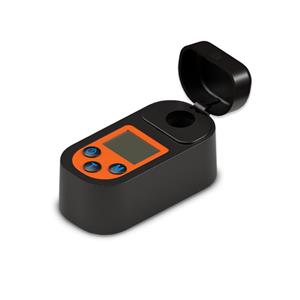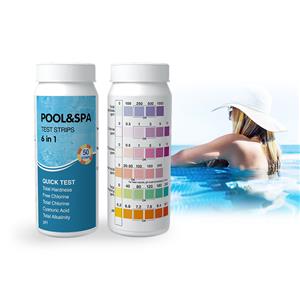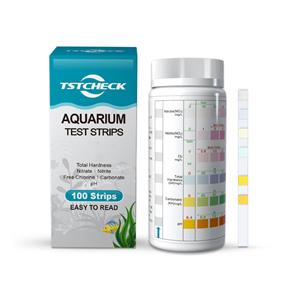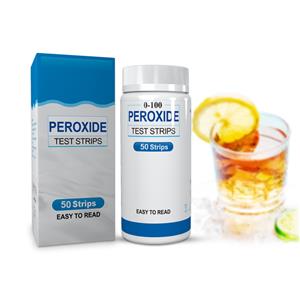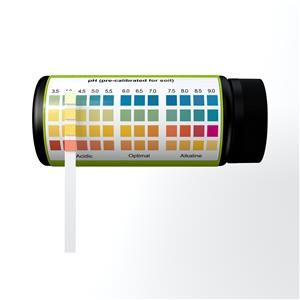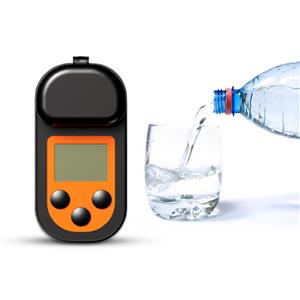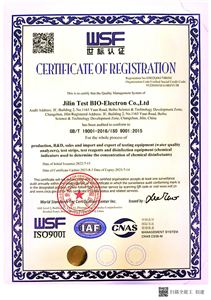Disinfectant H2O2 Hydrogen Peroxide Test Strips
Brand :TSTCHECK
Product origin :Changchun, Jilin, CN
Delivery time :7- 30 days
Supply capacity :300,000 bottles
Detects residual peroxides in drinking water, pools, and hot tubs where Hydrogen Peroxide is used as a disinfectant
Hydrogen Peroxide Water Quality Test Strips: A Comprehensive Guide
1. Introduction
2. Understanding Hydrogen Peroxide in Water
2.1 Properties and Uses of Hydrogen Peroxide
2.2 Importance of Monitoring Hydrogen Peroxide Concentration
Disinfection Efficacy: In water treatment plants, maintaining the correct concentration of hydrogen peroxide is crucial for effective disinfection. If the concentration is too low, it may not be able to kill all the harmful pathogens, leading to potential health risks. On the other hand, if the concentration is too high, it can cause damage to pipes, equipment, and aquatic life if the water is discharged into natural water bodies.
Industrial Process Control: In industries such as food and beverage, pharmaceuticals, and electronics, hydrogen peroxide is used in various manufacturing processes. Precise control of its concentration in water used in these processes is necessary to ensure product quality and safety. For example, in the production of bottled water, the right amount of hydrogen peroxide for disinfection is required to meet strict quality standards.
3. How Disinfectant Peroxide Test Strips Work
3.1 Principle of Operation
3.2 Components of the Test Strip
Reagent - Impregnated Pad: The key component of the test strip is the reagent - impregnated pad. This pad is usually made of a porous material such as filter paper that has been impregnated with a chemical reagent. The reagent is carefully selected to have a high specificity for hydrogen peroxide. Common reagents used in these test strips include certain organic dyes or compounds that can be oxidized by hydrogen peroxide to produce a visible color change.
Backing Material: The reagent - impregnated pad is attached to a backing material, which provides support and stability to the test strip. The backing material is often made of a plastic or paper - like material that is resistant to water and does not interfere with the chemical reaction on the pad.
3.3 Color - Comparison and Concentration Determination
4. Types of Peroxide Test Strips
4.1 Single - Range Test Strips
4.2 Multi - Range Test Strips
5. Advantages of Using Peroxide Test Strips
5.1 Simplicity and Ease of Use
5.2 Quick Results
5.3 Cost - Effectiveness
5.4 Portability
6. Applications of H₂O₂ Hydrogen Peroxide Test Strips
6.1 Water Treatment Industry
Disinfection Monitoring: In water treatment plants, hydrogen peroxide is often used as an alternative or supplementary disinfectant to chlorine. H₂O₂ hydrogen peroxide test strips are used to monitor the concentration of hydrogen peroxide in the treated water to ensure that it is within the optimal range for effective disinfection. This helps in maintaining the quality of the water supply and preventing the spread of water - borne diseases.
Sludge Treatment: Hydrogen peroxide is also used in sludge treatment processes in water treatment plants. Test strips are used to monitor the hydrogen peroxide concentration in the sludge treatment tanks to ensure that the oxidation process is proceeding as expected. This helps in reducing the volume of sludge and making it easier to handle and dispose of.
6.2 Aquaculture
Water Quality Management: In aquaculture, maintaining good water quality is essential for the health and growth of fish and other aquatic organisms. Hydrogen peroxide is sometimes used to control pathogens in the water. Test strips are used to monitor the hydrogen peroxide concentration in the aquaculture ponds or tanks to ensure that it is not too high, as excessive hydrogen peroxide can be harmful to the fish. At the same time, it should be sufficient to effectively control the pathogens.
Oxygenation: Hydrogen peroxide can also be used to increase the dissolved oxygen levels in the water. Test strips help in monitoring the hydrogen peroxide concentration to ensure that the oxygenation process is working properly without causing any negative impacts on the aquatic environment.
6.3 Food and Beverage Industry
Equipment Sanitization: In the food and beverage industry, hydrogen peroxide is used for sanitizing equipment, containers, and food contact surfaces. Test strips are used to check the concentration of hydrogen peroxide in the sanitizing solutions to ensure that they are effective in killing bacteria and other microorganisms. This is crucial for maintaining food safety and preventing contamination of food products.
Water Used in Production: The water used in food and beverage production processes, such as brewing, bottling, and food processing, needs to be of high quality. Hydrogen peroxide may be used for disinfection purposes. Test strips are used to monitor the hydrogen peroxide concentration in this water to ensure that it meets the strict quality standards of the industry.
6.4 Pharmaceutical Industry
Water for Injection (WFI) Production: In the pharmaceutical industry, water for injection (WFI) is required to be of the highest quality. Hydrogen peroxide may be used in the purification process of WFI. H₂O₂ hydrogen peroxide test strips are used to monitor the hydrogen peroxide concentration to ensure that it is completely removed from the WFI before it is used in the production of pharmaceutical products. Any residual hydrogen peroxide in the WFI can affect the stability and safety of the drugs.
Facility Disinfection: Hydrogen peroxide is also used for disinfecting clean rooms and other areas in pharmaceutical manufacturing facilities. Test strips are used to verify the effectiveness of the hydrogen peroxide - based disinfectants used in these areas.
7. Comparing Peroxide Test Strips with Peroxide Test Kits
7.1 Test Kits: Components and Functionality
7.2 Advantages of Test Kits
Higher Precision: Test kits often offer higher precision compared to test strips, especially for low - concentration or very high - concentration hydrogen peroxide measurements. The use of calibrated droppers and the ability to perform more complex chemical reactions in test tubes can result in more accurate readings.
Multiple Tests: Test kits usually come with enough reagents to perform multiple tests. This can be cost - effective in situations where a large number of water samples need to be tested over a period of time.
7.3 Disadvantages of Test Kits
Complexity: Test kits are generally more complex to use compared to test strips. They require more steps in the testing process, including proper handling of test tubes, accurate measurement of reagents, and careful mixing. This complexity may require some training or prior experience in laboratory techniques.
Time - Consuming: The testing process with a test kit usually takes longer than using test strips. The steps of adding reagents, waiting for the reaction to occur, and properly mixing the solutions can add several minutes to the testing time.
7.4 When to Choose Test Strips vs. Test Kits
For Quick and Simple Checks: If quick, on - the - spot testing is required, and a general estimate of the hydrogen peroxide concentration is sufficient, test strips are the better choice. For example, in a water treatment plant during routine checks or in an aquaculture facility for daily water quality monitoring.
For Precise and Detailed Analysis: When high precision is crucial, such as in pharmaceutical or food and beverage applications where strict quality control is required, or when dealing with very low or very high hydrogen peroxide concentrations, test kits may be more appropriate.
8. Storage and Shelf - Life of Peroxide Test Strips
8.1 Storage Conditions
8.2 Shelf - Life
9. Conclusion
Factory. We speicalize in producing water test strips for years....more
-
Download
- Category.pdf

